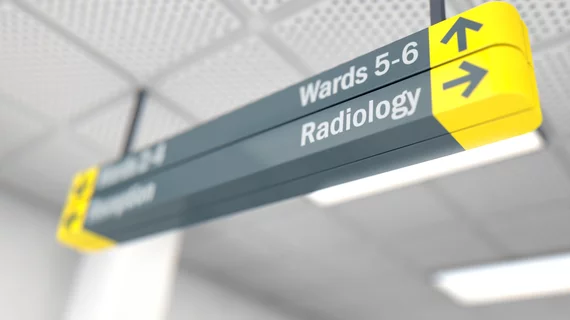Researchers analyze why radiology exams are missed, what can be done
Why do some radiology cases get missed? More importantly, what approaches can be taken to minimize cases in which images and their corresponding reports go unread?
Anthony Galinato, MD, of Johns Hopkins Medical Institution in Baltimore, and colleagues sought to answer these questions in a study published Nov. 3 in the Journal of the American College of Radiology.
“Minimizing the number of studies that are not viewed is important to patient care,” they added. “It ensures that important and perhaps time-sensitive findings have appropriate clinical or imaging follow-up.”
The researchers analyzed 8,268 neuroradiology imaging studies ordered from all patient settings during September 2016. Tracking imaging and report access for eight months, the group looked at when imaging study orders were placed; when the patient finished the imaging study; when the imaging was accessed; and when the radiology reports were accessed.
Of the 7,438 study orders which were performed, 622 (8.4 percent) had neither the images nor imaging reports viewed in the PACS or EMR. Additionally, 12 departments had at least one study ordered that did not have its images nor report viewed. Otolaryngology had the highest percentage of studies that were never viewed (12.3 percent), followed by neurology at 11.7 percent.
These higher rates may be due in part to a reliance on clinical symptoms to guide decision-making in otolaryngology, the authors noted. In neurology, Galinato et al. argued the long-term follow-up nature of many neurology studies may be a factor behind the higher rate.
The institutional outpatient setting had the most missed cases at 273. This was followed by the outpatient community setting (208 cases), the emergency department (ED) (132 cases) and inpatient setting (9 cases). In the ED, 7.8 percent of cases were never viewed, which the authors found “concerning” due to the higher acuity nature of those cases compared to outpatient studies.
Finally, 124 studies which were never viewed were classified as normal, 247 included findings that needed follow-up and three cases were determined to be critical.
What can be done?
One way to minimize lost studies is to implement a system into Epic which notifies the ordering clinician when a study report or image has been opened within a certain timeframe following a study’s completion, Galinato et al. wrote.
The authors also suggested putting more power into the hands of patients though an opt-in system which would send out a notification regarding the status of their radiology report. Galinato et al. argued this would be particularly helpful in cases which required follow-up, and could simultaneously reduce the ever-growing radiologist workload.
“As this study demonstrates, the rate of studies with images and reports that are not viewed can be high, particularly in the community outpatient setting by remote referring physicians,” the authors wrote. “It is important to address this high rate and possibly implement ways to minimize the number of these nonviewed studies.”

